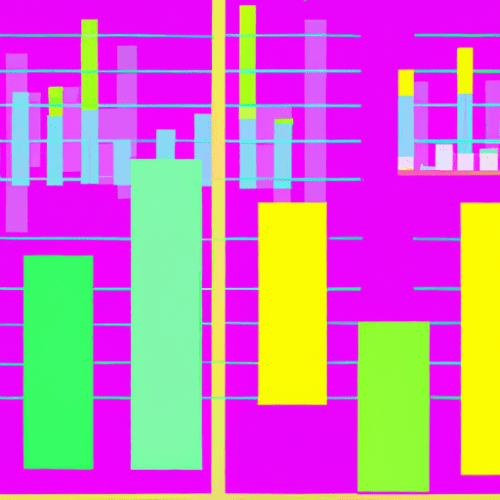
Located in the heart of Africa’s Great Lakes region, Burundi is a landlocked nation with a rich cultural heritage and a history deeply influenced by colonialism and conflict. Yet, beneath this surface lies a rarely heard story—a nation quietly battling across-the-board poverty, economic instability, and developmental challenges with limited resources. Despite its small size, Burundi faces some of the harshest living conditions globally. The statistics paint a sobering picture: according to recent data, Burundi consistently ranks as one of the world’s poorest countries by Gross Domestic Product (GDP) per capita.
In this blog post, we dive into Burundi’s poverty landscape, using current statistics to uncover the root causes of its economic hardship. Our focus is to bring visibility to the silent struggle of Burundi, helping readers and policy makers understand the critical numbers and narratives that shape its people’s daily lives.
Burundi in Numbers: An Overview of Poverty Statistics
Poverty is not just a statistic in Burundi—it is a daily reality for millions. According to the World Bank’s latest data, over 70% of Burundi’s population lives below the international poverty line of $2.15 a day (PPP, 2017 prices). The national poverty rate is equally stark, affecting over 65% of Burundians.
- GDP per Capita (2022): $238 (current USD, World Bank)
- Global Ranking: 197 out of 198 countries (second-lowest worldwide)
- Population (2024 estimate): 13.2 million
- Human Development Index (2021): 0.426 (Ranked 185 out of 191 countries by UNDP)
- Life Expectancy: 62 years (World Bank, 2021)
- Extreme Poverty Rate: 72% (using $2.15/day poverty line, World Bank)
These figures are not isolated. They reflect entrenched challenges in income, education, health, infrastructure, and governance. For a country just slightly larger than the US state of Maryland, the depth of poverty is remarkably severe.
Delving Deeper: Key Drivers and Indicators of Poverty in Burundi
Why does Burundi struggle with such immense levels of poverty? The reasons are multidimensional and complex. Here, we analyze some of the most significant contributors:
1. Historical Conflict and Political Instability
Burundi’s modern history is marred by ethnic violence, civil war (1993–2005), and periodic political crises. These conflicts have cost tens of thousands of lives and displaced millions. According to the United Nations High Commissioner for Refugees (UNHCR), over 300,000 Burundians have sought refuge in neighboring countries since 2015. Instability has crippled institutional development, undermined investor confidence, and sapped the nation’s productive resources.
2. Agriculture-Dependent Economy
With more than 90% of the labor force engaged in subsistence farming, Burundi’s economy is heavily dependent on agriculture, particularly coffee and tea. However, productivity is low, arable land is scarce, and regular environmental shocks such as droughts and floods damage crops. According to FAO statistics, malnutrition affects over 50% of the population, as food insecurity is both chronic and widespread.
3. Rapid Population Growth
Burundi is one of Africa’s most densely populated countries, with about 435 people per square kilometer. High birth rates stretch already scarce resources: the average Burundian woman gives birth to almost 5 children (World Bank, 2021). Rapid population growth increases the demand for food, land, and social services, further straining the economy.
4. Limited Access to Education and Health Services
Educational attainment remains low, with only 61% of children finishing primary school (UNICEF, 2022). Secondary school enrollment is even lower, hampered by poverty, early marriage, and child labor. In healthcare, only about 40% of births are attended by skilled health personnel, contributing to an under-five mortality rate of 53 per 1,000 live births (UNICEF, 2021).
5. Underdevelopment in Infrastructure and Energy
Challenging terrain and underfunding mean that much of Burundi’s rural population is isolated from essential infrastructure. Only 11% of people have access to electricity (World Bank, 2022), among the lowest rates worldwide. Poor roads, limited access to clean water, and a lack of sanitation facilities trap many families in a cycle of poverty.
Poverty’s Face: Statistics About the Daily Realities in Burundi
Behind each number is a human story—the mother walking miles for clean water, the child who cannot attend school, the farmer whose crops were destroyed by floods. Here are some of the starkest illustrations of Burundi's daily struggle:
- Nutrition: Over half of children under 5 are stunted due to chronic malnutrition (UNICEF, 2022).
- Water and Sanitation: Just 56% of people have basic access to clean water; only 48% have basic sanitation facilities (World Bank, 2021).
- Income Inequality: Gini coefficient of 42.6 (World Bank, 2019), indicating significant income disparity.
- Unemployment: Youth unemployment exceeds 11%, with rural underemployment affecting many more (ILO, 2022).
- Aid Dependency: Foreign aid comprises over 40% of the national budget (IMF, 2021).
These statistics underline just how deeply poverty is woven into the fabric of daily life in Burundi. The struggle is not just economic but social and generational, affecting aspirations, life outcomes, and even national stability.
International Efforts and the Way Forward
In response to these challenges, international organizations, NGOs, and Burundi’s government have made efforts to prioritize poverty reduction. The government’s National Development Plan (PND 2018–2027) seeks to foster inclusive growth and human development. Likewise, the World Bank, IMF, UNICEF, WFP, and other major actors are supporting health, education, nutrition, agricultural productivity, and governance reforms.
However, progress remains slow and fragile. Political inclusivity, sustained peace, improvements in agricultural value chains, education reforms, and gender equality are vital for real change. As climate shocks intensify across East Africa, building resilience into every sector is more critical than ever.
Conclusion: Why Burundi’s Numbers Matter—And How the World Can Help
Burundi’s poverty crisis is statistically severe, but behind each figure stands an individual, a family, a hope for a better future. As one of the world’s poorest countries, Burundi is a powerful example of the urgent need for global action on poverty, inequality, and sustainable development. Whether it’s through policy support, humanitarian assistance, fairer trade, or smarter aid, the international community plays a critical role in helping Burundi’s people break the cycle of poverty.
Raising awareness is the first step. By examining the statistics about poverty in Burundi, we not only shed light on the country’s silent struggle but also remind ourselves that our shared humanity demands action. Only by addressing the root causes through investment, peace-building, and resilience can Burundi hope to change the story behind its staggering numbers.
Further Reading:








